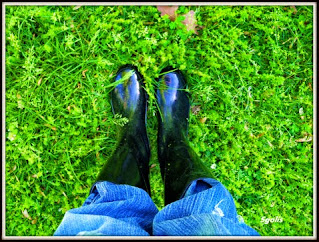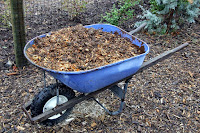Grow a sage container garden for your culinary kitchen or outdoor garden. This easy container garden will add color and interest to your living space. The foliage of the sage is attractive as the leaves vary in color. Some sage leaves are green with touches of yellow, others are purple with touches of gray, and some are a rich shade of green that compliments both purple and yellow. The sage herb is easy to grow provided it has direct light and dry heat.
This year I am growing Honeydew Melon sage. It has dark green leaves with red flowers in the summer. The flowers have a fruity fragrance that attracts butterflies to my garden. We use sprigs of honey melon sage to garnish our summer beverages; lemonade and sweet tea. The honey melon sage is a delicious herb and would be a good choice for a butterfly garden or sensory garden.
Instructions for growing a sage container herb garden.
Step 1: Gather what you need to grow a sage container garden. Various sizes in containers, potting soil, compost, a bag of rocks, fertilizer, an assortment of nursery-grown sage plants, grass clippings, garden gloves, garden tools, and a hose.
Step 2: Plan your sage arrangement for your containers. You may want to display the various container sizes in groups on a sunny section of your patio, or in your garden. Decide which sage plants work with your color scheme..
Step 3: Prepare containers for planting. Turn the container over and look for adequate drainage. Add a layer of small rocks to the bottom of the container. These rocks will aid in water drainage. Fill the containers with moist all-purpose potting soil mixed with compost.
Step 4: Dig a hole in the center of the container that is the same depth and width as the nursery container. Remove the sage from the nursery container. Use your hands to untangle the roots. Gently pull the roots away from the root ball. Set the sage in the center of the hole. Place the roots on the soil to encourage them to grow outward. Fill the hole with soil and water well.
Tips:
Plant sage herb outside after the danger of spring frost has passed. Water as needed, a sage plant requires evenly moist soil until the plants are established. In late spring when the ground has warmed to 70 degrees, apply a mulch of grass clippings around the sage plants.




















